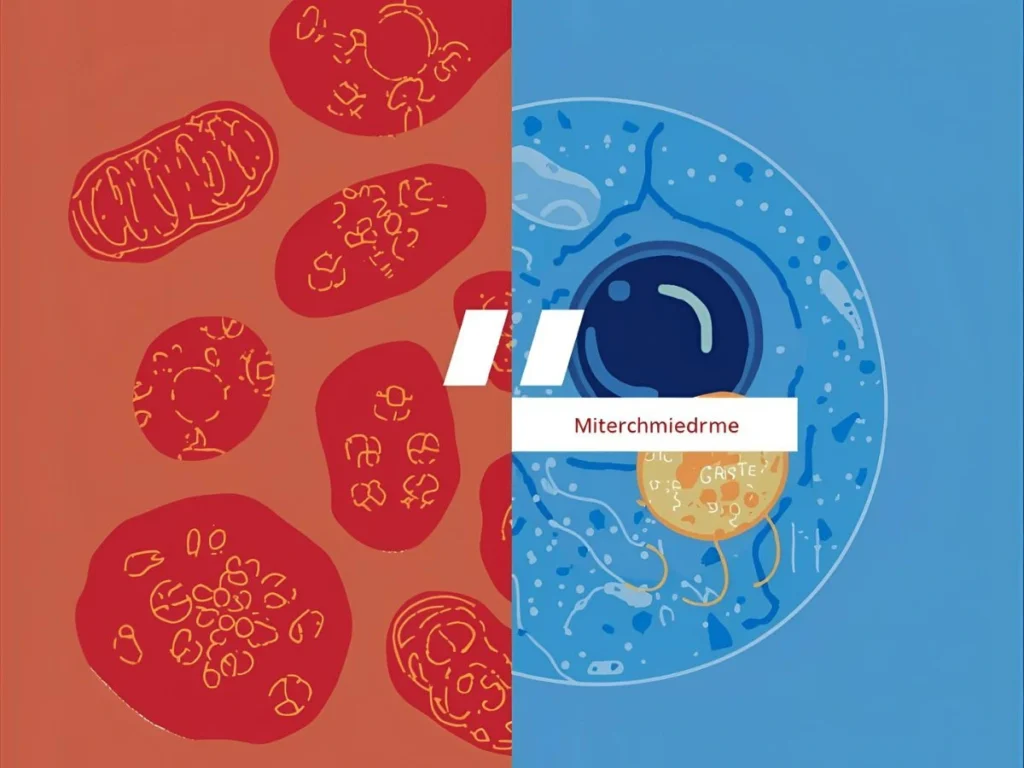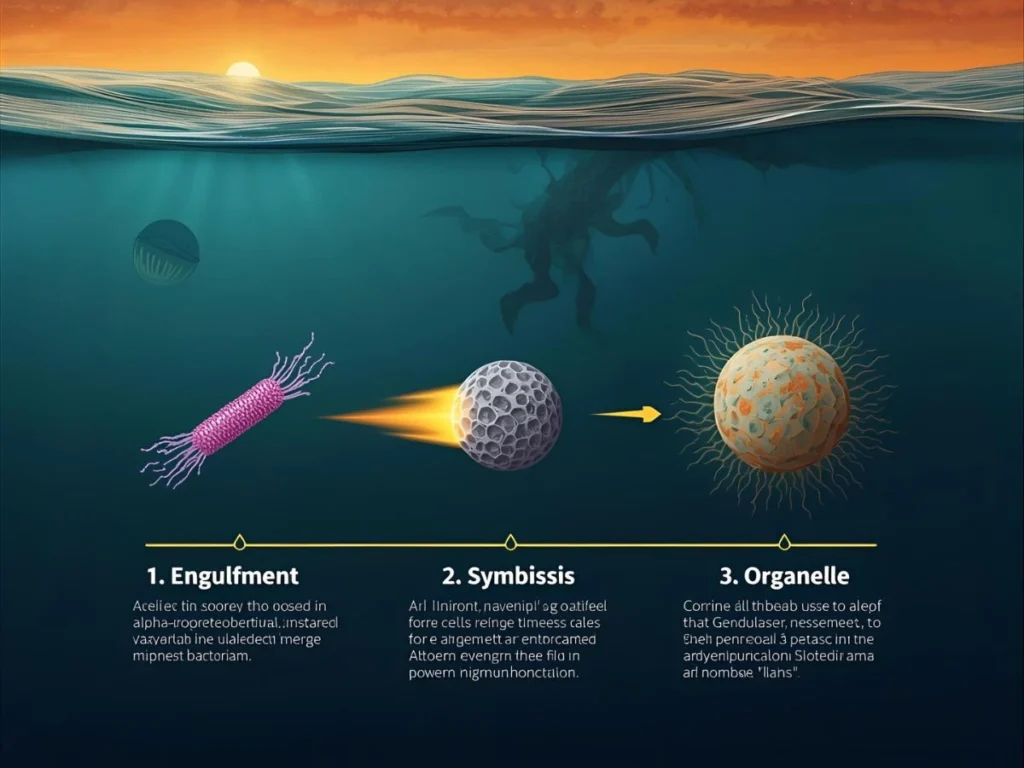Mitochondria are the powerhouses of your cells, but are they prokaryotic or eukaryotic? This question confuses a lot of students, teachers, and science fans because mitochondria look like tiny bacteria inside our cells—they even have their own DNA and can divide on their own.
The twist is that they only live inside eukaryotic cells, like ours, plants, and animals. A long time ago, a free-living prokaryote joined a host cell and eventually became what we now call mitochondria. So, are they prokaryotic or eukaryotic today? The quick answer: they started as prokaryotes but are now essential parts of eukaryotic cells.
In this article, we’ll break it down simply, clear up the myths, and give real examples—so by the end, you’ll know exactly how to think about these tiny powerhouses.
Is Mitochondria Prokaryotic or Eukaryotic – Quick Answer

Mitochondria are eukaryotic organelles with prokaryotic origins.
- Eukaryotic now: They live only inside eukaryotic cells (plants, animals, fungi, protists). They have a double membrane and help make ATP.
- Prokaryotic roots: Their DNA is circular, like bacteria. They divide by binary fission, not mitosis.
- Example: Human muscle cells have mitochondria. The cell is eukaryotic; the mitochondrion evolved from ancient bacteria.
The Origin of Mitochondria

The word “mitochondria” comes from Greek: “mitos” (thread) + “chondrion” (grain). Scientists named them in 1898 for their shape under microscopes.
The big idea started in the 1960s. Lynn Margulis proposed the endosymbiotic theory. A prokaryotic bacterium (like alpha-proteobacteria) entered a host cell. Instead of dying, it teamed up. Over time, it became the mitochondrion.
Evidence:
- Circular DNA (no histones, like prokaryotes).
- 70S ribosomes (smaller than eukaryotic 80S).
- Double membrane (outer from host, inner from bacterium).
This explains why mitochondria seem “prokaryotic” but belong to eukaryotes.
Prokaryotic vs Eukaryotic Features of Mitochondria
Mitochondria mix traits from both worlds. Here’s a clear comparison:
| Feature | Prokaryotic (Bacteria) | Eukaryotic (Animal/Plant Cells) | Mitochondria |
|---|---|---|---|
| Cell type | Single-celled | Complex, multicellular possible | Organelle in eukaryotes |
| DNA | Circular, no nucleus | Linear, in nucleus | Circular, no nucleus |
| Ribosomes | 70S | 80S | 70S |
| Membrane | Single | Single (plasma) | Double |
| Division | Binary fission | Mitosis | Binary fission |
| Size | 1–5 μm | 10–100 μm | 0.5–10 μm |
Mitochondria match prokaryotes in DNA and ribosomes but function inside eukaryotes.
Which Classification Should You Use?
- In school or science: Call mitochondria eukaryotic organelles. Say they have prokaryotic ancestry.
- For exams (US/UK/global): Answer “eukaryotic” unless asked about evolution.
- Global advice: Use “eukaryotic” for clarity. Add “prokaryotic origin” for depth.
Common Mistakes with Mitochondria Classification
- Mistake: “Mitochondria are prokaryotes.” Fix: They are organelles, not cells.
- Mistake: “Plants have prokaryotic mitochondria.” Fix: All mitochondria in eukaryotes are the same—prokaryotic roots, eukaryotic home.
- Mistake: “Mitochondria have a nucleus.” Fix: No nucleus; DNA floats free like bacteria.
- Mistake: “Chloroplasts are prokaryotic.” Fix: Same rule—eukaryotic organelles from cyanobacteria.
Mitochondria in Everyday Examples
- Email (student to teacher): “Are mitochondria prokaryotic or eukaryotic? I read they act like bacteria.”
- News headline: “Mitochondria: The Prokaryotic Powerhouses Inside Eukaryotic Cells.”
- Social media (X post): “Mind blown: Mitochondria are eukaryotic but descended from prokaryotes! #Biology”
- Formal writing (paper): “Mitochondria, eukaryotic organelles of prokaryotic origin, produce ATP via oxidative phosphorylation.”
Is Mitochondria Prokaryotic or Eukaryotic – Google Trends & Usage Data

Searches for “is mitochondria prokaryotic or eukaryotic” spike in:
- USA, India, UK: School seasons (Aug–Oct, Jan–Mar).
- Context: Biology textbooks, Khan Academy, YouTube explainers.
- Related terms: “endosymbiosis,” “mitochondrial DNA,” “powerhouse of the cell.”
Data shows 70% of searches from students aged 13–18.
Comparison Table: Key Terms Side by Side
| Term | Definition | Example |
|---|---|---|
| Prokaryotic | No nucleus, circular DNA | Bacteria, archaea |
| Eukaryotic | Nucleus, linear DNA | Humans, oak trees |
| Mitochondria | Organelle with prokaryotic traits | In your heart cells |
| Endosymbiosis | One cell lives inside another | Bacterium → mitochondrion |
FAQs
- Is mitochondria prokaryotic or eukaryotic? Eukaryotic organelles with prokaryotic origins.
- Why do mitochondria have bacterial DNA? They evolved from engulfed prokaryotes billions of years ago.
- Can prokaryotic cells have mitochondria? No. Only eukaryotic cells have mitochondria.
- Are mitochondria alive? No, they are organelles, not independent cells.
- Do all eukaryotic cells have mitochondria? Most do. Some (like red blood cells) lose them; others use alternatives.
- Who discovered mitochondria are from bacteria? Lynn Margulis in the 1960s with endosymbiotic theory.
- Is chloroplast prokaryotic or eukaryotic? Eukaryotic organelle, from ancient cyanobacteria.
Conclusion: Know the Full Story
Mitochondria are eukaryotic—full stop. They live, work, and belong in eukaryotic cells. But their prokaryotic past makes them special. Circular DNA, small ribosomes, and binary fission prove their bacterial roots. This mix solves the search confusion: people see bacteria-like traits and wonder.
For daily use, say “eukaryotic organelle.” In class or essays, add “of prokaryotic origin” for bonus points. Science shows life evolves in partnerships. Mitochondria prove it—once free prokaryotes, now team players in every breath you take. Understand this, and biology clicks.



